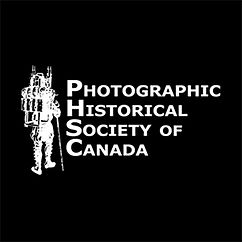Margaretha Bootsma: Evocative Transformations
- by Cece Scott
- Jul 16, 2017
- 3 min read
Updated: Nov 9, 2019

The creative process for West Coast artist Margaretha Bootsma began primarily with clay and drawing. While photography was always a part of Bootsma’s artistic path, it significantly emerged as an integral partner in her emergence as a multi-faceted artist. In fact, photography is the conjunctive “and” of her artist’s statement: “Painting and photography; earthy, evocative transformative elements, such as metal, sand, wax, and photography.”
“I consider the combined expression of painting and photography inseparable to my creative expression,” Bootsma states. “I use photography to introduce narrative into my work that can have multiple interpretations. The paint plays a supportive role in this. I like the tension between the photograph’s ‘realist’ version of a place and the organic application of paint that blurs or challenges this account.” The process of painting versus taking photographs entails two different approaches and philosophies for Bootsma, processes that evoke singular ways of thinking and feeling. Whereas photography involves more strategy, more attention to semantics such as detail around lighting, depth of field, framing, and time values, thus “referencing the intellect,” painting is more spontaneous, less calculated, and more adventurous, denoting for Bootsma “the emotional, intuitive body.” “Paint is handled in a spontaneous manner that engages the quality of accident or chance and evokes organic matter and earth phenomenon,” Bootsma states. She explains that this engagement of accident involves “not thinking about what one is doing … letting go of control and immersing oneself in the act of painting. Pouring paint onto a surface has infinite unexpected possibilities that allows for little control and for happy ‘accidents’ to occur. Scraping away or sanding a surface is similar in that one has to let go of the existing surface to reveal another. This way of working is an adventure. I am never sure what the outcome will be.”

Bootsma cultivated her creative process by melding the crafts of photography and painting by utilizing experimentation, integration, and intuitive artistic vision. Through a series of steps, some specific and some intuitive in expression, she built her works on wood panels.
“Prior to painting, the photographs are placed on various surfaces, and then, as another way to engage the element of chance, the surface is sanded randomly,” Bootsma says. “The marks left through the sanding process are emphasized with paint. The photographs are arranged in a constructed sequence to create a narrative that in reality does not exist. This construction questions notions of photography as an accurate record of reality. Painting on [the photograph’s] surface further blurs this distinction and permits the addition or elimination of elements depicted in the photo. In so doing, one reflects on the effect of photography on realist painting traditions and on the influence of painting on the tradition of photography.” The staccato marks as white noise remind Bootsma of an out-of-tune radio or a TV with poor reception, which in turn leads to the incessant electromagnetic noises inherent in our ubiquitous cell-phone, laptop, GPS world.
Bootsma is interested in capturing groups of people or solitary individuals in the ocean or by the shores who are viewed at a distance. The people remain anonymous, and viewers are readily able to identify with their own experiences of water.
Bootsma studied ceramics and drawing at Instituto Allende Mexico for a year, followed by the study of painting at Emily Carr College of Art and Design. She is inspired by colour field painters such as Helen Frankenthaler and Mark Rothko, as well as abstract expressionist painters Robert Rauschenberg and Jackson Pollock because of “their expressive use of ‘action painting’ and the utilization of accident in painting.” Rauschenberg’s use of found objects and photography also had a major effect on Bootsma’s work. “I think that my early affinity for the texture of clay also informed how I worked with textured surfaces in these early paintings,” Bootsma said.

More of Margaretha Bootsma’s work can be found online on her website: www.margarethabootsma.com
This article originally appeared in the Winter Issue in 2010.
Bootsma passed in 2011 and was remembered by her friends and family in Vancouver, British Columbia at the Bau-Xi Gallery in 2011.


































.png)

.png)

.jpg)